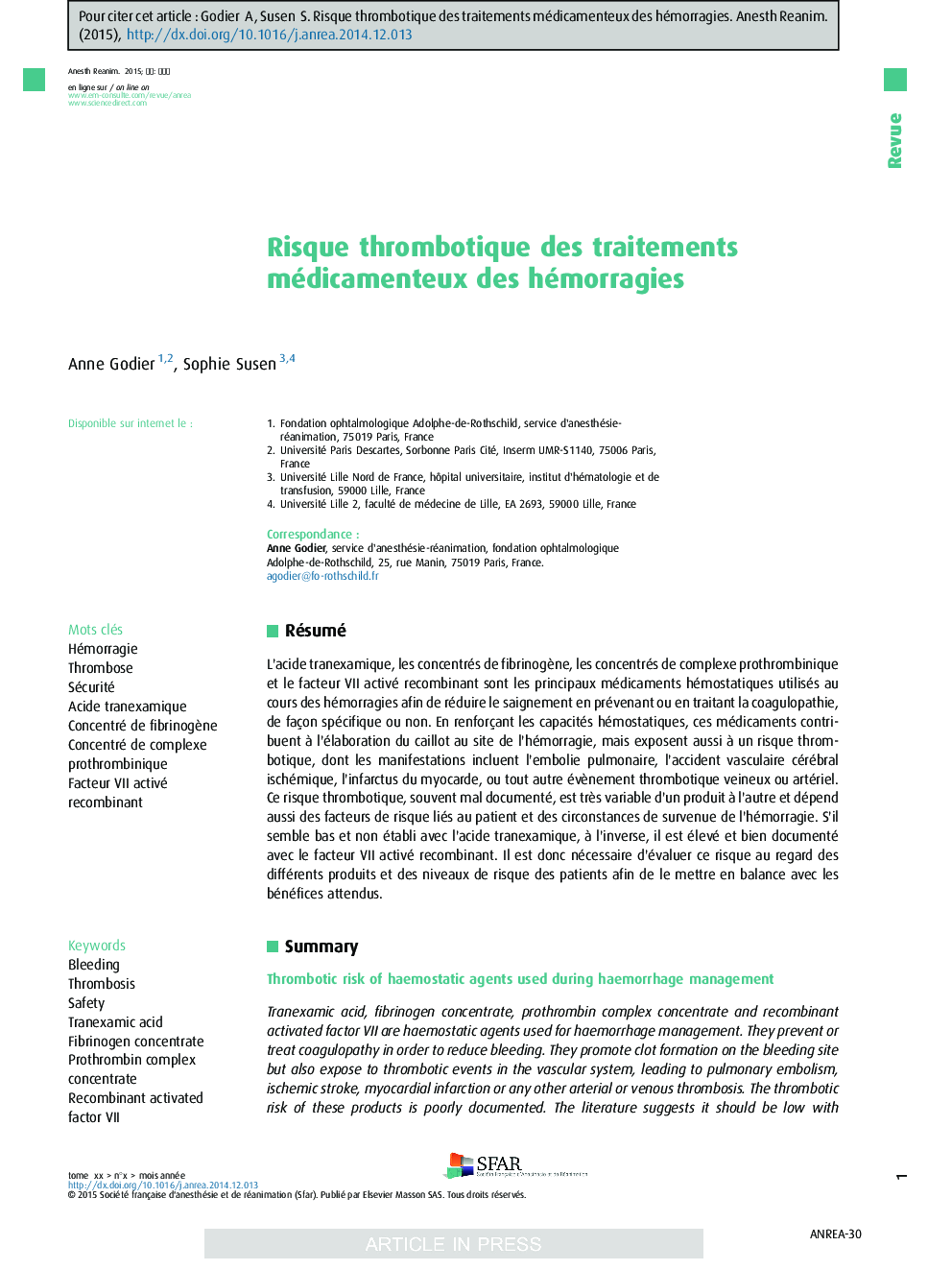| Article ID | Journal | Published Year | Pages | File Type |
|---|---|---|---|---|
| 2744131 | Anesthésie & Réanimation | 2015 | 8 Pages |
Abstract
Tranexamic acid, fibrinogen concentrate, prothrombin complex concentrate and recombinant activated factor VII are haemostatic agents used for haemorrhage management. They prevent or treat coagulopathy in order to reduce bleeding. They promote clot formation on the bleeding site but also expose to thrombotic events in the vascular system, leading to pulmonary embolism, ischemic stroke, myocardial infarction or any other arterial or venous thrombosis. The thrombotic risk of these products is poorly documented. The literature suggests it should be low with tranexamic acid; conversely, recombinant activated factor VII is associated with a high thrombotic risk. As a result, the thrombotic risk of each haemostatic agent needs to be well evaluated for assessing the net clinical benefit (benefits versus harms balance) of these different treatments used alone or in association for haemorrhage management.
Keywords
Related Topics
Health Sciences
Medicine and Dentistry
Anesthesiology and Pain Medicine
Authors
Anne Godier, Sophie Susen,
